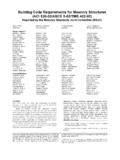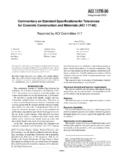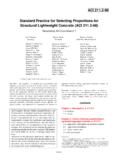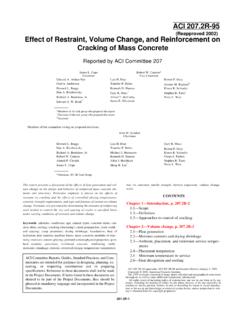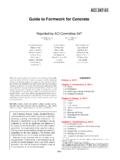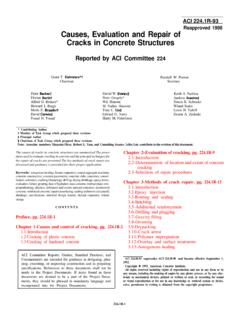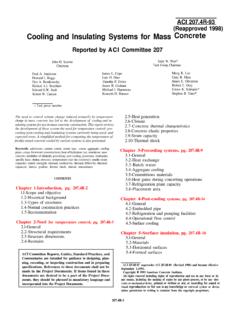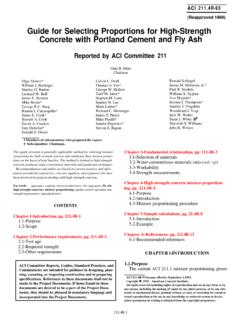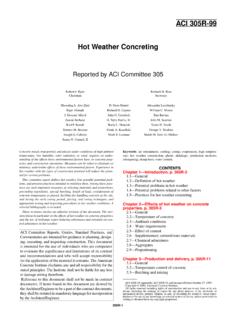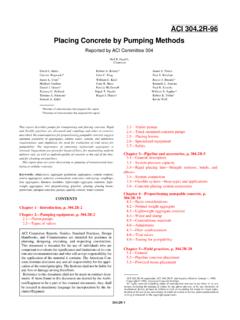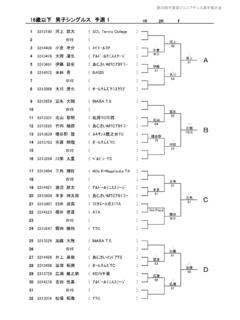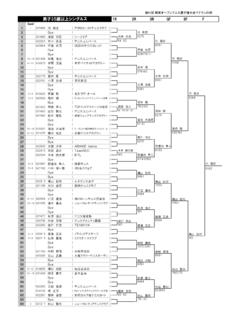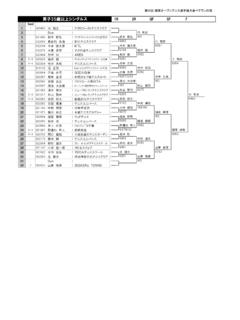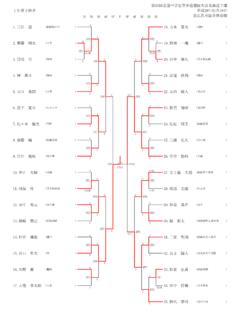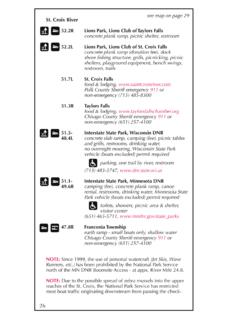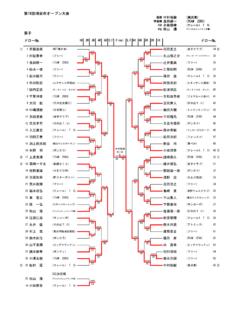Transcription of 201.2R-01 Guide to Durable Concrete - bpesol.com
1 ACI supersedes ACI (Reapproved 1997) and became effec-tive September 6, 2001, American Concrete rights reserved including rights of reproduction and use in any form or by anymeans, including the making of copies by any photo process, or by electronic ormechanical device, printed, written, or oral, or recording for sound or visual reproduc-tion or for use in any knowledge or retrieval system or device, unless permission inwriting is obtained from the copyright proprietors. ACI Committee Reports, Guides, Standard Practices,and Commentaries are intended for guidance in planning,designing, executing, and inspecting construction. Thisdocument is intended for the use of individuals who arecompetent to evaluate the significance and limitations ofits content and recommendations and who will accept re-sponsibility for the application of the material it American Concrete Institute disclaims any and all re-sponsibility for the stated principles.
2 The Institute shallnot be liable for any loss or damage arising to this document shall not be made in con-tract documents. If items found in this document are de-sired by the Architect/Engineer to be a part of the contractdocuments, they shall be restated in mandatory languagefor incorporation by the Architect/Engineer. to Durable ConcreteACI Guide describes specific types of Concrete deterioration. Each chaptercontains a discussion of the mechanisms involved and the recommendedrequirements for individual components of Concrete , quality considerationsfor Concrete mixtures, construction procedures, and influences of the expo-sure environment, all important considerations to ensure Concrete durabil-ity. Some guidance as to repair techniques is also document contains substantial revisions to Section (chemicalsulfate attack) and also includes a new section on physical salt attack (Sec-tion ).
3 The remainder of this document is essentially identical to the pre-vious Guide to Durable Concrete . However, all remaining sections ofthis document are in the process of being revised and updated, and theserevisions will be incorporated into the next published version of this Guide . Both terms water-cement ratio and water-cementitious materials ratioare used in this document. Water-cement ratio is used (rather than thenewer term, water-cementitious materials ratio) when the recommenda-tions are based on data referring to water-cement ratio. If cementitiousmaterials other than portland cement have been included in the Concrete ,judgment regarding required water-cement ratios have been based on theuse of that ratio. This does not imply that new data demonstrating concreteperformance developed using portland cement and other cementitiousmaterials should not be referred to in terms of water-cementitious materi-als.
4 Such information, if available, will be included in future : abrasion resistance; adhesives; admixture; aggregate; airentrainment; alkali-aggregate reaction; bridge deck; carbonation; calciumchloride; cement paste; coating; corrosion; curing; deicer; deterioration;durability; epoxy resins; fly ash; mixture proportion; petrography; plastic;polymer; pozzolan; reinforced Concrete ; repair; resin; silica fume; skidresistance; spalling; strength; sulfate attack; water-cement ratio; water-cementitious materials , p. 1 Freezing and thawing, p. Mechanisms of frost actionReported by ACI Committee 201W. Barry ButlerDonald J. JanssenHannah C. SchellJoseph G. Cabrera*Roy H. KeckJames W. SchmittRamon L. CarrasquilloMohammad S. KhanCharles F. ScholerWilliam E. Ellis, Klieger*Jan P.
5 SkalnyBernard Erlin Joseph L. Lamond Peter SmithPer Fidjest lCameron MacInnisGeorge W. TeodoruStephen W. ForsterStella L. MarusinNiels ThaulowClifford GordonBryant MatherMichael D. ThomasRoy HarrellMohamad A. NagiJ. Derle ThorpeHarvey H. HaynesRobert E. NealPaul J. TikalskyEugene D. Hill, K. NmaiClaude B. TrustyCharles J. HookhamWilliam F. PerenchioDavid A. Whiting*R. Doug HootonRobert E. Price*J. Craig WilliamsAllen J. HulshizerJan R. PrusinskiYoga V. YogendranRobert C. O NeillChairmanRussell L. HillSecretary* COMMITTEE Ice-removal Recommendations for Durable structuresChapter 2 Aggressive chemical exposure, Chemical sulfate attack by sulfate from sourcesexternal to the Physical salt Seawater exposure Acid CarbonationChapter 3 Abrasion, p.
6 Testing Concrete for resistance to Factors affecting abrasion resistance of Recommendations for obtaining abrasion-resistantconcrete Improving wear resistance of existing Studded tire and tire chain wear on Skid resistance of pavementsChapter 4 Corrosion of metals and other materials embedded in Concrete , p. Principles of Effects of Concrete -making Concrete quality and cover over Positive protective Corrosion of materials other than Summary commentsChapter 5 Chemical reactions of aggregates,p. Types of Alkali-silica Alkali-carbonate Preservation of Concrete containing reactive Recommendations for future studiesChapter 6 Repair of Concrete , p. Evaluation of damage and selection of repair Types of Preparations for Bonding Treatment of cracksChapter 7 Use of protective-barrier systems to enhance Concrete durability, p.
7 Characteristics of a protective-barrier Elements of a protective-barrier Guide for selection of protective-barrier Moisture in Concrete and effect on barrier Influence of ambient conditions on Encapsulation of concreteChapter 8 References, Referenced standards and Cited Other referencesAppendix A Method for preparing extract for analysis of water-soluble sulfate in soil, p. of hydraulic-cement Concrete is defined as itsability to resist weathering action, chemical attack, abrasion,or any other process of deterioration. Durable Concrete willretain its original form, quality, and serviceability when ex-posed to its environment. Some excellent general referenceson the subject are available (Klieger 1982; Woods 1968).This Guide discusses the more important causes of con-crete deterioration and gives recommendations on how toprevent such damage.
8 Chapters on freezing and thawing, ag-gressive chemical exposure, abrasion, corrosion of metals,chemical reactions of aggregates, repair of Concrete , and theuse of protective-barrier systems to enhance Concrete dura-bility are included. Fire resistance of Concrete and crackingare not covered, because they are covered in ACI 216, ACI224R, and ACI , and thawing in the temperate regions of theworld can cause severe deterioration of Concrete . Increaseduse of Concrete in countries with hot climates has drawn at-tention to the fact that deleterious chemical processes, suchas corrosion and alkali-aggregate reactions, are aggravatedby high temperatures. Also, the combined effects of coldwinter and hot summer exposures should receive attention inproportioning and making of Durable is required for the chemical and most physical pro-cesses to take place in Concrete , both the desirable ones andthe deleterious.
9 Heat provides the activation energy thatmakes the processes proceed. The integrated effects of waterand heat, and other environmental elements are importantand should be considered and monitored. Selecting appropri-ate materials of suitable composition and processing themcorrectly under existing environmental conditions is essen-tial to achieve Concrete that is resistant to deleterious effectsof water, aggressive solutions, and extreme damage is fairly well damage is accelerated, particularly in pavements by theuse of deicing salts, often resulting in severe scaling at thesurface. Fortunately, Concrete made with quality aggregates,low water-cement ratio (w/c), proper air-void system, andallowed to mature before being exposed to severe freezingand thawing is highly resistant to such in soil, groundwater, or seawater are resisted byusing suitable cementitious materials and a properly propor-tioned Concrete mixture subjected to proper quality the topic of delayed ettringite formation (DEF) re-mains a controversial issue and is the subject of various on-going research projects, no definitive guidance on DEF isprovided in this document.
10 It is expected that future versionsof this document will address DEF in significant TO Durable Concrete will resist occasional exposure to mildacids, but no Concrete offers good resistance to attack bystrong acids or compounds that convert to acids; special pro-tection is necessary in these can cause Concrete surfaces to wear away. Wearcan be a particular problem in industrial floors. In hydraulicstructures, particles of sand or gravel in flowing water canerode surfaces. The use of high-quality Concrete and, in ex-treme cases, a very hard aggregate, will usually result in ade-quate durability under these exposures. The use of studdedtires on automobiles has caused serious wear in Concrete pave-ments; conventional Concrete will not withstand this spalling of Concrete in bridge decks is a serious prob-lem.
